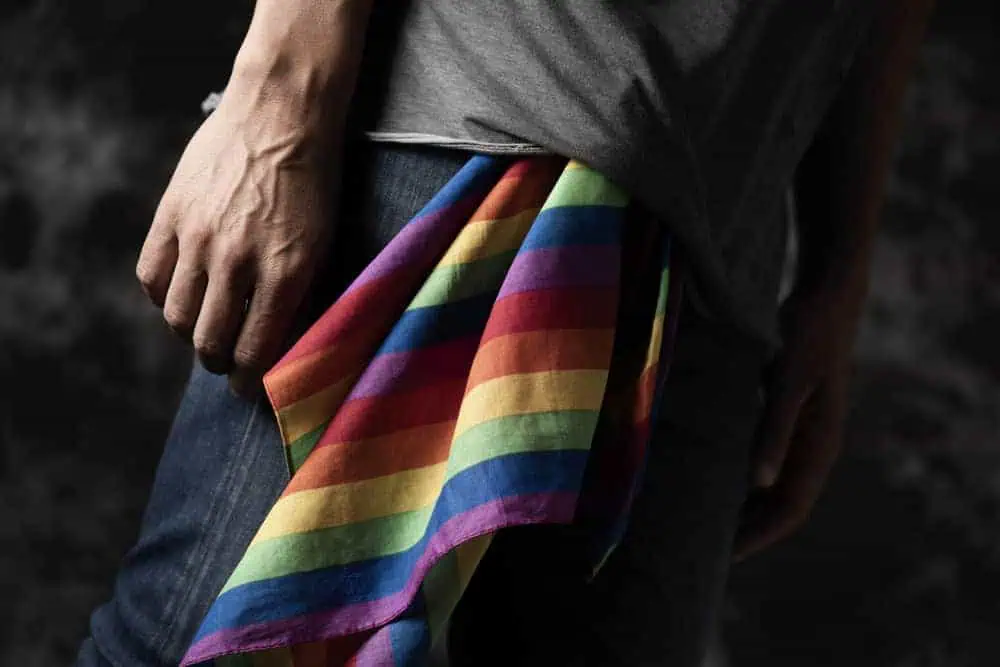
A Brief History of the Hanky Code
June is LGBTQ Pride Month, and what better way to celebrate than highlighting a piece of LGBTQ culture and history that doesn’t get much discussion — the hanky code! Believe it or not, there’s even a code for sex toys.
What is the Hanky Code?

For example, a person wearing a light pink handkerchief in their left pocket tells you they enjoy using sex toys on other people. While somebody wearing them on the right means they want sex toys used on them.
The Hanky Code Originates in the LGBTQ+ Community
The hanky code, also known as “flagging,” has its origins in the LGBTQ+ community as a method of non-verbal communication of sexual interest. This was especially important in eras that criminalized LGBTQ+ sex, and explicit discussion of sex lead to the arrest of LGBTQ people. The use of the hanky code has become less common as social attitudes changed. Online dating and hookup apps make it easier to communicate wants and desires, but it is still used today.
The History of the Handy Code

The modern hanky code gained popularity in the 1970s, although again with different claims to the start. One theory says that Mr. S Leather created the modern code. Their supplier of red and blue hankies accidentally doubled their order, and an expanded modern code was needed to help them sell the extra colors. Another theory says that the New York paper The Village Voice started it, again accidentally. The story goes that a journalist joked that instead of just wearing keys on the left or right to indicate being a top or bottom, it would be more efficient to use different colored hankies to indicate particular sexual interests.
Regardless of its origin, by 1980 the hanky code became widely used within the LGBTQ+ community, especially in the LGBTQ+ leather community.
How do I use the Hanky Code?

There are more flagging colors than I can outline here. To get you started, here are a few of the more common colors and what they represent.
Navy Blue
Navy blue traditionally indicates an interest in anal sex, although some people use it for an interest in vaginal and/or anal penetration. If somebody wears dark blue on the left, they want to penetrate their partner, while on the right they want to be penetrated.
Black
Black indicates an interest in sadism and masochism, although the specific acts vary from person to person. For some, it may involve heavy spanking, while for others it might involve particular kinds of dirty talk. This lack of specificity reminds us that the hanky code isn’t a substitute for communication with a partner about your mutual desires.
Light Pink
As stated earlier, light pink is for play involving sex toys. A person wearing light pink on their left uses (or wears, in the case of strap-on harnesses) sex toys. Wearing light pink on their left means they want sex toys used on them.
Grey
Grey indicates an interest in bondage, which overlaps slightly with black. However, grey generally indicates lighter play or just an interest in bondage without other BDSM play. A person wearing it on the left wants to tie somebody up (or down!). Somebody wearing on the right wants to be the one tied.
Conclusion
The hanky code has a long history, and even though it’s less common now, it can be a fun way to communicate or express your sexuality! What colors would you flag?

